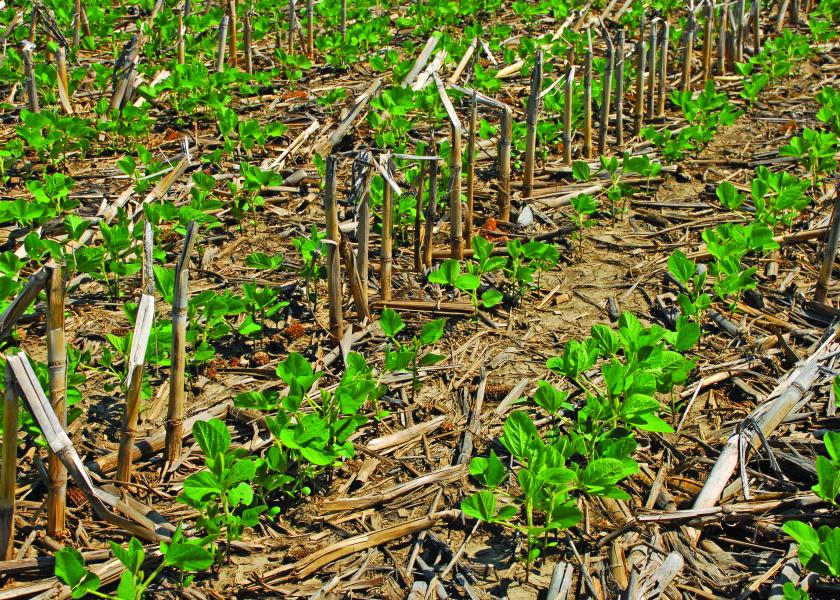Don't Make the Same Mistake Twice: Lessons from 2018

This past year farmers across the corn- and soybean-growing states were inundated with a myriad of challenges. Farmer responses to those challenges lended to, or detracted from, the season’s ultimate success. Learn from those decisions that didn’t work quite as well as hoped.
“There are some things we learned that we can’t react to, like weather,” says Jim Schwartz, Beck’s Hybrids director of Practical Farm Research and agronomy. “But there are some things we can and should react to and learn from [like management practices].”
From planting, to harvest, each decision made on the farm has a last effect on end results. Take a critical look at each management decision made in 2018 and its ultimate affect. Use this information to avoid making the same mistake twice in 2019.
The sins of planting emerge at harvest. Whether it’s the wrong seed treatment, poor seed placement or the wrong hybrid or variety, those mistakes show up in the combine. Look back at your combine and planting records and make corrections this season.
“Every year we do research on planter closing wheels, and every year we learn that anything we test is better than the standard rubber closing wheels that come on a planter,” Schwartz says.
While those wheels, admittedly, have great pop-up thanks to good seed-to-soil contact, they also create compaction issues that limit root growth. He says to consider trying different closing wheels if farmers recognized fields with poor root systems or compaction.
When it comes to timing planting, much of that is out of farmers’ control because of Mother Nature’s curveballs, but you might be able to hedge your bets.
“If the ground conditions and calendar are right, with warmer weather a few days off, go ahead and plant,” says Erich Ellers owner of Forefront Ag Solutions. “We had times when the ground was working up nice, but the air temp and ground temp was cooler so go ahead and plant some, don’t plant all. I’m not saying mud it in, if the ground is fit go for it.”
It’s often worse to wait too long and rush to get crops in when soil conditions are less than idea, Ellers adds.
Take action in-season to manage yield-robbing factors. Don’t let disease, weeds and nutrient deficiency take the top end off yields. Diseases ran rampant in 2018. Goss’s wilt hit farmers in the western Corn Belt, while relatively new corn disease tar spot plagued farmers in the east. Watch for carryover disease risk and be ready with a fungicide—you could be money ahead to pre-order fungicides for fields you know you’ll need it.
“Goss’s wilt is a viral disease versus a fungal disease like GLS or NLCB, you can’t manage Goss’s with a fungicide,” says Bruce Battles, Syngenta head of agronomy for Golden Harvest. “It goes back to genetics being the lead management practice. Once the pathogen is in the soil you can’t get rid of it, then it boils down to whether or not you have the full disease triangle.”
Tar spot on the other hand is still new enough researchers don’t know the best way to control it. Though, companies did experiment and take note of hybrids that seemed to withstand the disease best. Talk with seed representatives to find out what they recommend.
“In soybeans a key disease is phytopthera, but new varieties with the RPS3A gene and field tolerance are providing better results,” says Harmon Wilts, Dekalb technical agronomist in Minnesota. Other soybean issues he’s seen are white mold, sudden death syndrome and soybean cyst nematode. Each of these have genetic resistance scores that he recommends looking for a “4” or better [in Dekalb smaller numbers confer greater tolerance].
Nitrogen and other nutrients frequently ran short in 2018 due excessive rainfall. Agronomists say this should be a good reminder to perform tissue and soil tests to see what is available to the crop. After that, determine the economics of foliar or side dress nutrient applications.
“We saw farmers in 2018 cut back on fertilizer and mining the soil to save cost,” Wilt says. “Those yields [slipped]. Long term this fertility piece is really important. We take a lot of nutrients out growing 200-plus bu. corn, we can’t fertilize for 150 corn anymore.”
Consider time of day when applying nutrients and fungicides.
“We started doing a lot of research on foliar applications at specific times of day for micronutrients because big yields remove more from the soil,” Schwartz says. “So far we see a positive trend to morning or evening applications. Our theory is that when it’s cooler, stomates are open and provide a more ideal entry point for nutritional products. We’re trying it with fungicides on corn as well.”
Every season presents challenges all their own. While in 2018 farmers might have battled too much or far too little water, this year could bring a whole new host of challenges. A disease that pressured crops this year might not show up for another three or four years. Take what happened this past year into account for sure, but agronomist advise farmers not to make drastic changes based on a single year.
“In some ways I tells farmers to think about what not to do differently next year,” Battles says. “We had some really interesting events from Mother Nature. Don’t overreact—the worst thing you can do is start abandoning ship on a proven hybrid or practice because of one year.”







